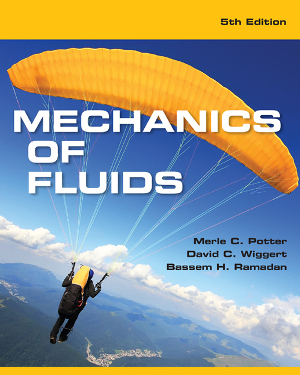
“Our approach is geared toward getting these students to look differently at an engineering problem without immediately reaching for their calculators and using the old ‘plug and chug’ method.”
Dr. Bassem Ramadan, department head of Mechanical Engineering at Kettering University, is taking his knowledge and expertise beyond the confines of campus.
Ramadan, who has been a faculty member at Kettering since 1998, co-authored the textbook “Mechanics of Fluids.” The book has recently been translated into Spanish, Mandarin and Korean.
“I use this book at Kettering when I teach the course MECH 322 Fluid Mechanics. This is one of my favorite subjects to teach, and when I was invited to participate I immediately agreed to do it,” Ramadan said. “It was a lot of hard work, but I also enjoyed working on it, so knowing that it will be available in many countries is exciting and rewarding to me. As a student I always acquired the textbooks, read most of each book and practiced solving almost all the problems in the book. This practice will give you a better understanding of the subject and it will enhance your knowledge and problem solving skills.”
At Kettering, Ramadan is director of the Combustion Simulation Research Laboratory. His specialties include Advanced Combustion engines, Emissions Quantification and Control, Alternative Fuels and Dual-Fuel Combustion, Exhaust After-treatment Methods, Non-Newtonian Fluid Flow, Reacting Flows, and Rotating Flows in Turbomachinery.
 Ramadan got involved with the textbook after colleagues and professors at Michigan State University asked him to co-author the book with them. He was asked to co-author fourth and fifth editions of the book to add more real-life problems, pedagogy techniques, modify existing text and add more details to the solution manual.
Ramadan got involved with the textbook after colleagues and professors at Michigan State University asked him to co-author the book with them. He was asked to co-author fourth and fifth editions of the book to add more real-life problems, pedagogy techniques, modify existing text and add more details to the solution manual.
In addition, he developed a chapter on computational fluid mechanics (his research area), video tutorials, and a student solution manual. While fluid mechanics is an advanced topic, it is important for students to be aware of, Ramadan said. It is a subject not usually presented in an introductory course, but students may be assigned special topics which often require the use of computational fluid dynamics (CFD). He also developed a new section on the control volume analysis of wind turbines, and aerodynamic analysis of rotating wind turbine blades.
“The book presents fluid mechanics in a manner that helps students gain both an understanding of, and an ability to analyze the important phenomena encountered by practicing engineers,” Ramadan said. “The authors succeed in this through the use of several pedagogical tools that help students visualize the many difficult-to-understand phenomena of fluid mechanics.”
The examples in other fluid mechanics textbooks are outlined and carried out with the problem solving method of “Given, Find, Solution, and Comment.”
“Our approach is geared toward getting these students to look differently at an engineering problem without immediately reaching for their calculators and using the old ‘plug and chug’ method,” Ramadan said. “By not providing an outline of problem solving methodology, it requires students to begin thinking about how to solve a real problem sequenced by a process to discover principles on a need-to-have basis.
“The traditional approach relies on the analysis of facts and concepts presented by the professor to help students arrive at a solution. However, the motivation for solving an engineering problem should become an automatic part of the solution that closely emulates the real-world engineering environment of industry today.”
Explanations are based on basic physical concepts as well as mathematics which are accessible to undergraduate engineering students. This fifth edition includes a Multimedia Fluid Mechanics DVD which harnesses the interactivity of multimedia to improve the teaching and learning of fluid mechanics by illustrating fundamental phenomena and conveying fascinating fluid flows, Ramadan said.
This is the only text with a separate chapter on experimental methods to accompany the theoretical presentations. Also, at appropriate locations in the text, many experiments on the included DVD demonstrate the physical aspects of fluids. This reinforces the theory and shows real-life fluid situations.
“I’m excited and honored to be a part of this textbook. The latest editions have included the addition of real-life applications to examples and problems to help with the transition from theory to application,” he said. “More examples have been added to illustrate the theory presented in the text and to aid the student's understanding.”
This is the second textbook Ramadan has authored, the other being “Principles and Practice of Mechanical Engineering” published in 1998.